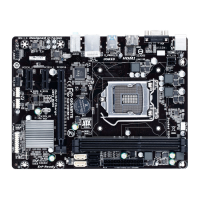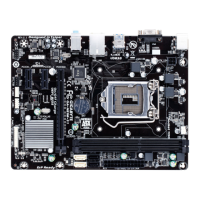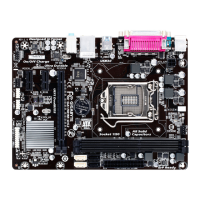
Do you have a question about the Gigabyte GA-H270M-DS3H and is the answer not in the manual?
| RAID levels | 0, 1, 5, 10 |
|---|---|
| Supported storage drive types | HDD & SSD |
| Component for | PC |
| Power source type | ATX |
| Motherboard chipset | Intel® H270 |
| Audio output channels | 7.1 channels |
| Motherboard form factor | micro ATX |
| Motherboard chipset family | Intel |
| Linux operating systems supported | Yes |
| Windows operating systems supported | Windows 10 Education, Windows 10 Education x64, Windows 10 Enterprise, Windows 10 Enterprise x64, Windows 10 Home, Windows 10 Home x64, Windows 10 Pro, Windows 10 Pro x64, Windows 7 Enterprise, Windows 7 Enterprise x64, Windows 7 Home Basic, Windows 7 Home Basic x64, Windows 7 Home Premium, Windows 7 Home Premium x64, Windows 7 Professional, Windows 7 Professional x64, Windows 7 Starter, Windows 7 Starter x64, Windows 7 Ultimate, Windows 7 Ultimate x64, Windows 8, Windows 8 Enterprise, Windows 8 Enterprise x64, Windows 8 Pro, Windows 8 Pro x64, Windows 8 x64, Windows 8.1, Windows 8.1 Enterprise, Windows 8.1 Enterprise x64, Windows 8.1 Pro, Windows 8.1 Pro x64, Windows 8.1 x64 |
| Memory channels | Dual-channel |
| Memory slots type | DIMM |
| Number of memory slots | 4 |
| Supported memory types | DDR4-SDRAM |
| Supported memory clock speeds | 2400, 2133 MHz |
| Supported memory module capacities | 16GB |
| Processor socket | LGA 1151 (Socket H4) |
| Compatible processor series | Intel Core i3, Intel Core i5, Intel Core i7 |
| Serial port headers | 1 |
| Number of SATA II connectors | 0 |
| Number of SATA III connectors | 6 |
| Number of SATA Express connectors | 2 |
| BIOS type | UEFI AMI |
| ACPI version | 5.0 |
| BIOS memory size | 64 Mbit |
| USB 2.0 ports quantity | USB 2.0 ports have a data transmission speed of 480 Mbps, and are backwards compatible with USB 1.1 ports. You can connect all kinds of peripheral devices to them. |
| Ethernet interface type | Fast Ethernet, Gigabit Ethernet |
| Depth | 244 mm |
|---|---|
| Width | 215 mm |
Safety guidelines and procedures before installing motherboard and components.
Detailed technical specifications of the motherboard, including CPU, memory, graphics, and slots.
Step-by-step instructions for installing the Central Processing Unit (CPU) into the socket.
Guidance on installing RAM modules, including dual-channel configuration.
Instructions for installing expansion cards into PCI Express slots.
Description of all external ports and connectors on the motherboard's rear panel.
Identification and description of various internal headers and connectors on the motherboard.
Overview of the initial screen displayed during system boot.
Motherboard Intelligent Tweaker (M.I.T.) menu for system performance tuning and overclocking.
Settings related to motherboard model, BIOS version, language, and system date/time.
Configuration options for boot sequence, security, and startup behavior.
Settings for onboard devices like LAN, audio, USB, and storage controllers.
Configuration options for Intel chipset features, including integrated graphics and timers.
Power management settings, AC BACK, and keyboard/mouse wake-up options.
Options for saving BIOS settings, loading defaults, and exiting the setup utility.
Step-by-step guide to setting up RAID arrays using BIOS utilities.
Instructions for installing the operating system with necessary RAID/AHCI drivers.
Process for installing motherboard drivers after the operating system is installed.
Statement regarding compliance with RoHS directive on hazardous substances.
Information on WEEE directive, recycling, and proper disposal of electronic waste.












